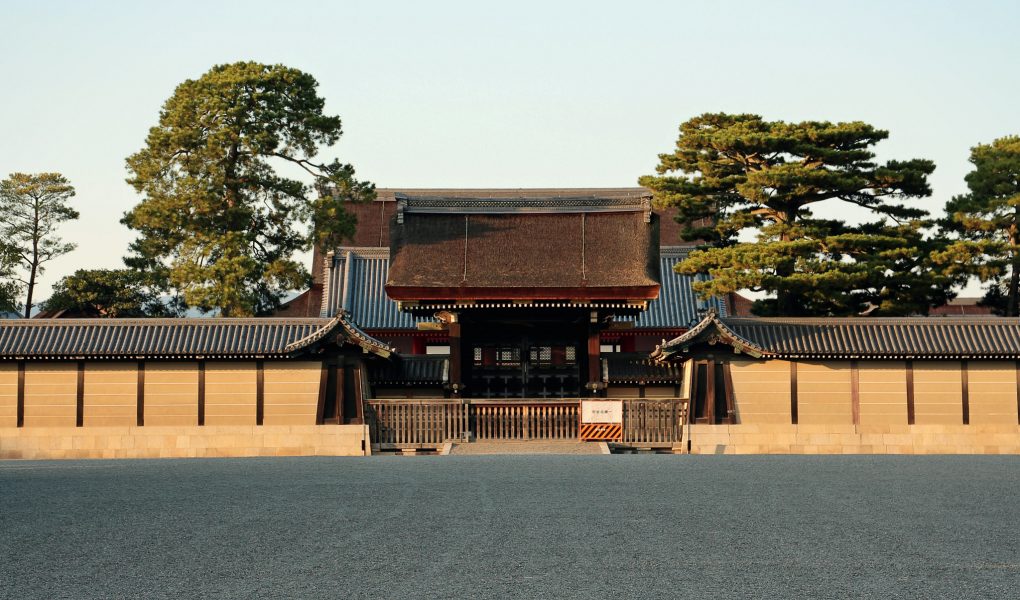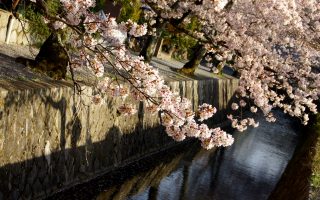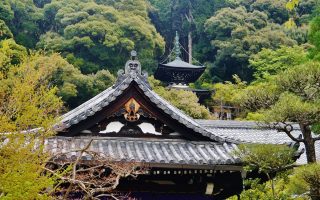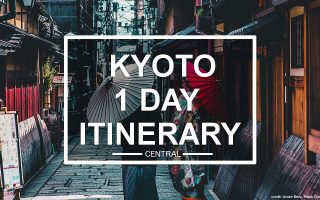Until 1868, Kyoto Imperial Palace was the seat and home of the ruling Emperor of Japan. The palace is located in Kyoto Gyoen, a park complex which encompasses the Imperial Palace and Sento Imperial Palace. The park and outdoor area of the palaces are open to the public at no charge. Visitors can apply for a guided tour which gives a peek of the insides of the palace, but don’t expect to enter the buildings.
Kyoto Imperial Palace
Kyoto was the capital of Japan and home of the Emperor up until the Meiji restoration in 1868. With the restoration, the Emperors residence was moved away from Kyoto, first to Nagoya for a few years and then to Tokyo where it still is today.
The current day location of the palace dates back to the 13th century, when the former residence, the Heian Palace, was abandoned. Kyoto Imperial Palace has suffered no less than 8 destructive fires over the centuries, and thus has existed in many variations. The buildings seen today date back to 1855. The current buildings were constructed to resemble the old Heian Palace.
Originally the park was walled off and the Emperor along with court nobles lived behind the walls. Following the Meiji restoration the walls were torn down, and the area is now a park, freely accessible to the public.
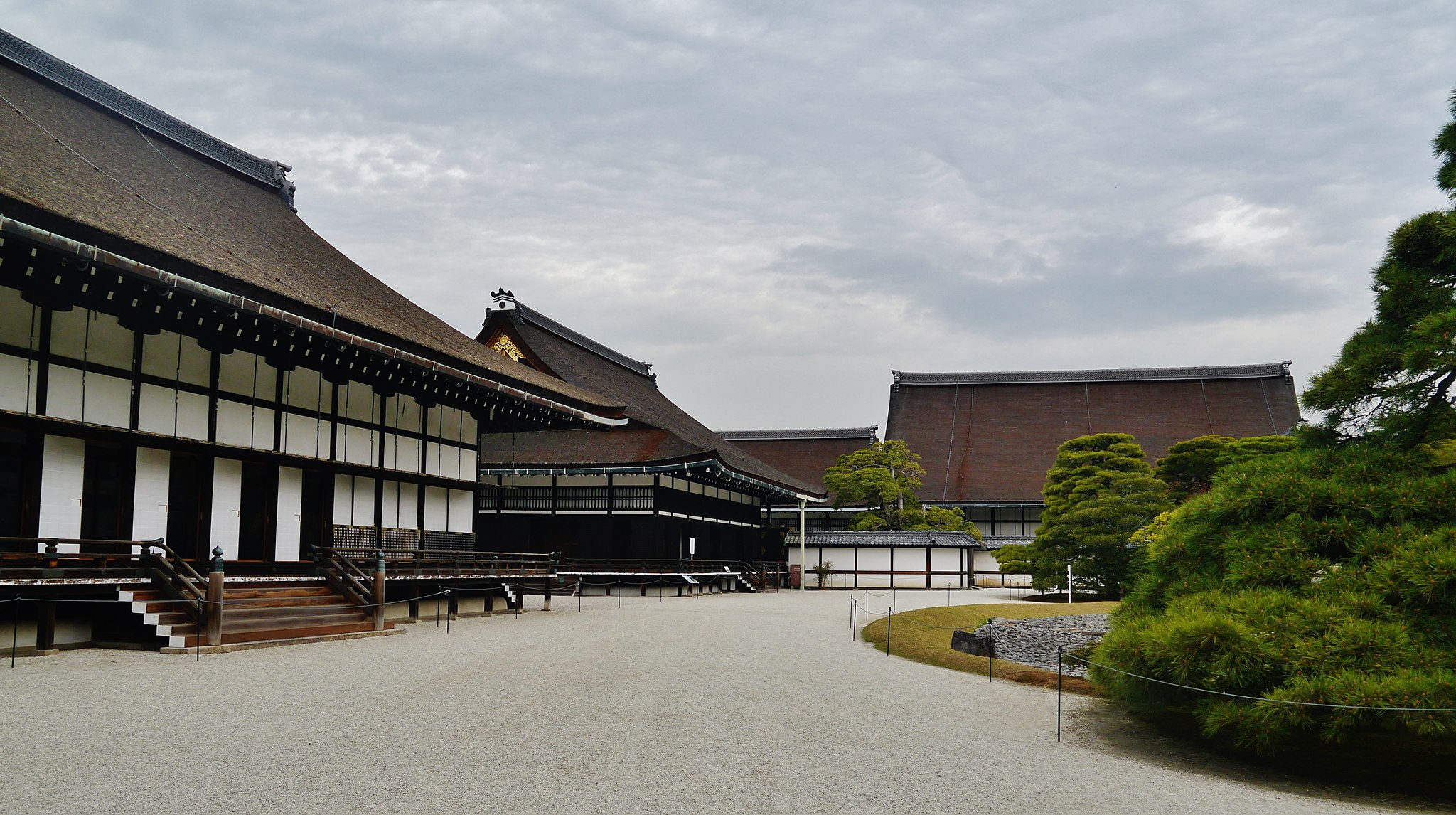
Sento Imperial Palace
Sento Imperial Palace was originally constructed in 1630 to house the retired Emperor Go-Mizunoo. The palace, which was located inside the Kyoto Gyoen “imperial park”, continued to function as a home for retired Emperors after Go-Mizunoo passed away. The buildings have burned down on several occasions over the centuries, the last time in 1854 after which they were never rebuilt. However, in 1867 Omiya Palace (meaning large palace) was constructed on the same grounds. Today Omiya Palace is used as the residence of the Imperial family when they visit Kyoto.
Today Sento Imperial Palace is a garden, rather than an actual palace. The original garden from 1630 was designed by the famous, early edo-period artist, Kobori Masakazu. Kobori was the designer behind many important castle gardens, including that of Nagoya Castle, Osaka Castle and Nijo Castle.
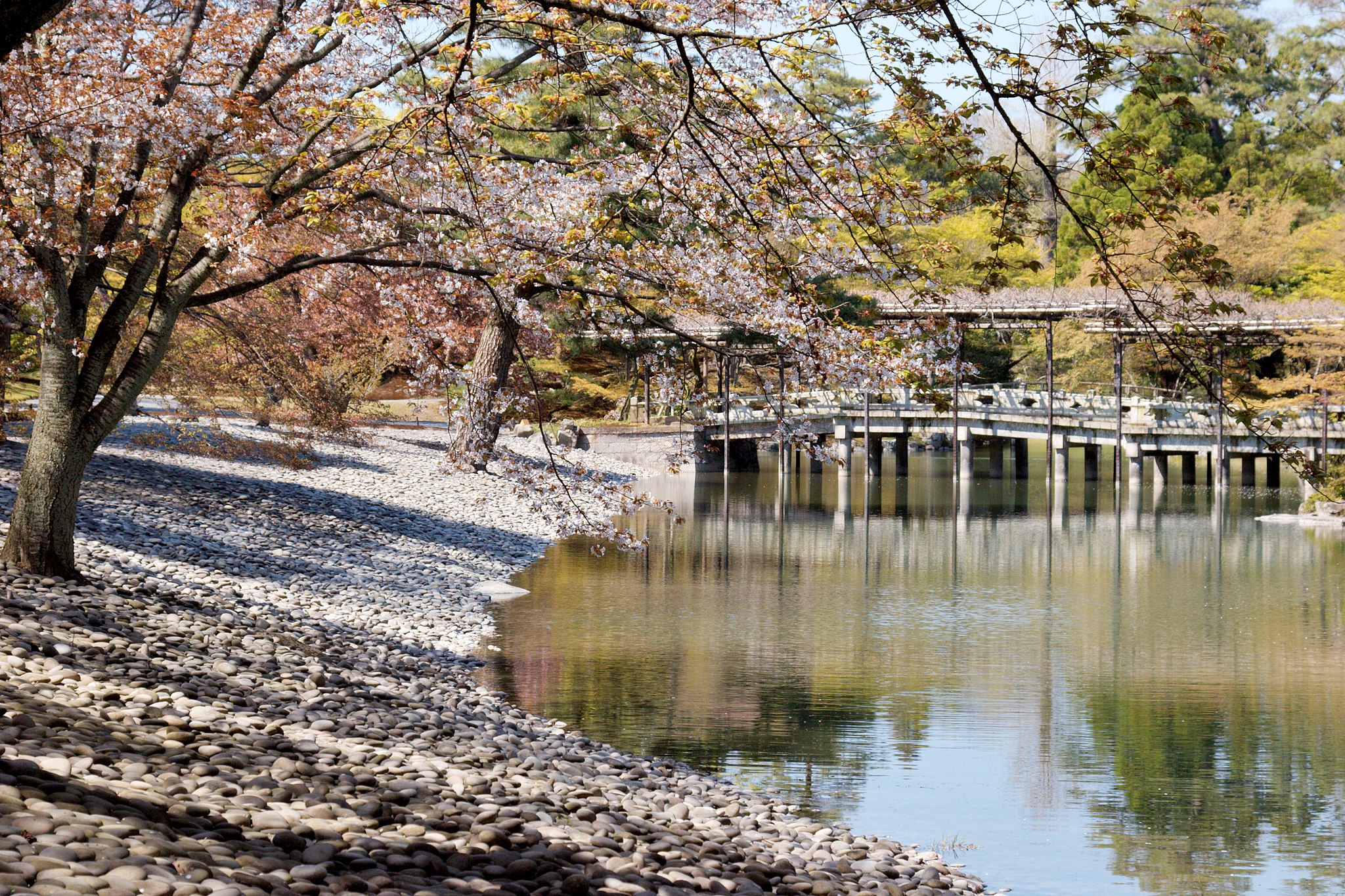
Kyoto Gyoen National Garden
This massive, rectangular garden, measures 1300m x 700m (0.8mi x 0.44mi) and encompasses the Kyoto Imperial Palace and Sento Palace. The garden is open to the public, and is a great place to escape the busy city of Kyoto. There are several entry gates on each side of the complex.
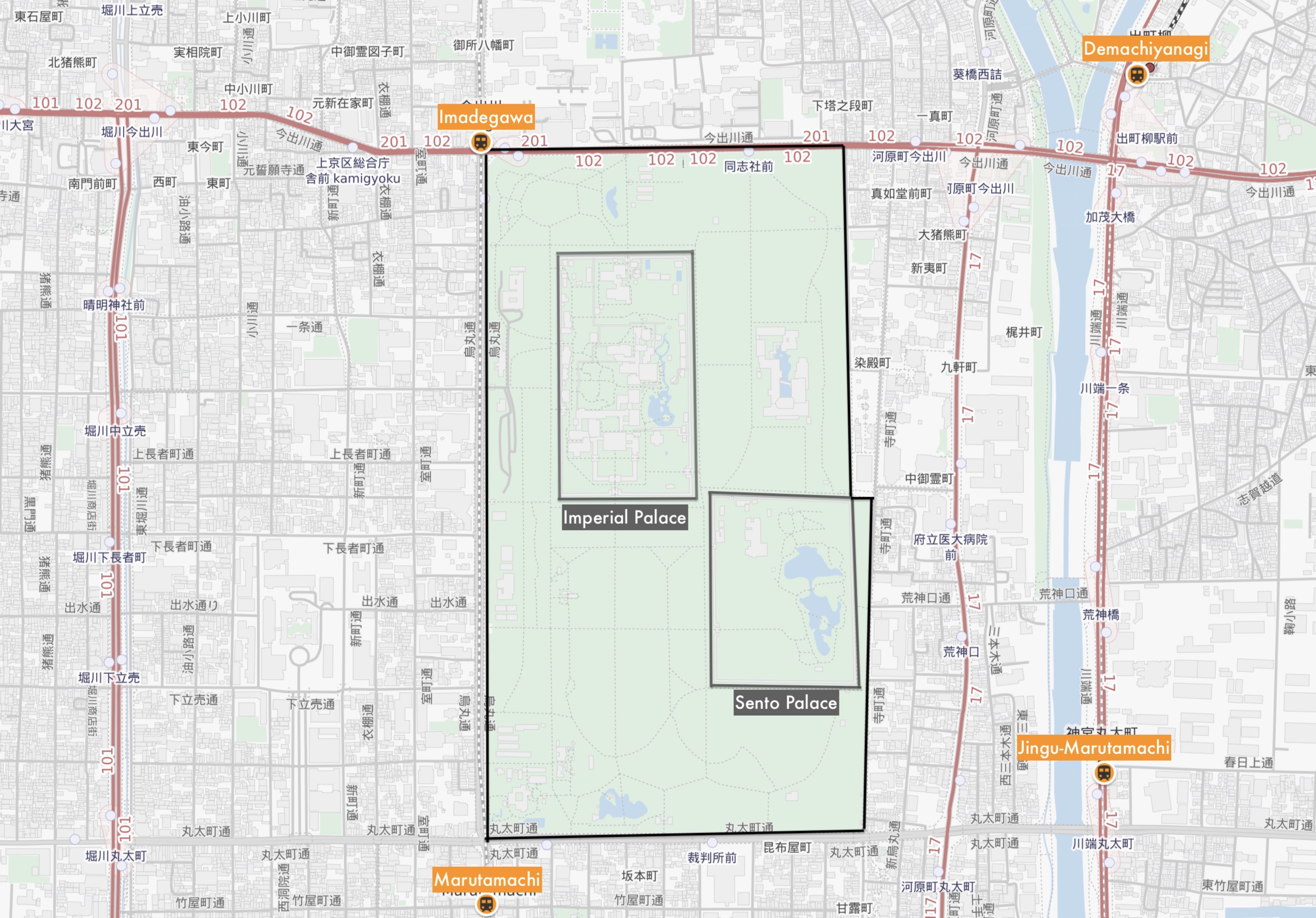
Getting there
Pro tip: Traveling around Kansai? Maybe the Kansai Thru Pass is something for you. The pass is valid for busses, subways and private railways – but not for JR trains.
By metro: the metro line runs along the western side of the imperial park. Marutamachi Station is located at the south-western corner and Imadegawa Station at the north-western corner. Both stations are served by the Karasuma Line.
By train: the local railway runs on the eastern side of the imperial palace, just across Kamo River. Jingu-Marutamachi Station is located towards the south-eastern end of the complex and is serviced by the Keihan Main Line. Demachiyanagi Station is located towards the north-eastern end and is serviced by the Keihan Main Line and the Eizan Main Line.
Cover photo by Davide Gorla. CC BY 2.0.

